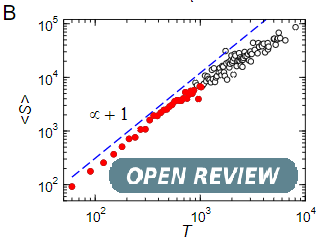How we move is universal: Scaling in the average shape of human activity
DOI:
https://doi.org/10.4279/pip.070017Keywords:
Circadian Cycle, Motor ActivityAbstract
Human motor activity is constrained by the rhythmicity of the 24 hours circadian cycle, including the usual 12-15 hours sleep-wake cycle. However, activity fluctuations also appear over a wide range of temporal scales, from days to a few seconds, resulting from the concatenation of a myriad of individual smaller motor events. Furthermore, individuals present different propensity to wakefulness and thus to motor activity throughout the circadian cycle. Are activity fluctuations across temporal scales intrinsically different, or is there a universal description encompassing them? Is this description also universal across individuals, considering the aforementioned variability? Here we establish the presence of universality in motor activity fluctuations based on the empirical study of a month of continuous wristwatch accelerometer recordings. We study the scaling of average fluctuations across temporal scales and determine a universal law characterized by critical exponents $\alpha$, $\tau$ and $1/{ \mu}$. Results are highly reminiscent of the universality described for the average shape of avalanches in systems exhibiting crackling noise. Beyond its theoretical relevance, the present results can be important for developing objective markers of healthy as well as pathological human motor behavior.
Received: 18 October 2015, Accepted: 10 November 2015; Edited by: E. Mizraji; Reviewed by: J. Lin, Department of Physics, Washington College, Maryland, USA.; DOI: http://dx.doi.org/10.4279/PIP.070017
Cite as: D R Chialvo, A M Gonzalez Torrado, E Gudowska-Nowak, J K Ochab, P Montoya, M A Nowak, E Tagliazucchi, Papers in Physics 7, 070017 (2015)
This paper, by D R Chialvo, A M Gonzalez Torrado, E Gudowska-Nowak, J K Ochab, P Montoya, M A Nowak, E Tagliazucchi, is licensed under the Creative Commons Attribution License 3.0.
Downloads
Published
How to Cite
Issue
Section
License
Copyright (c) 2015 Dante Chialvo, Ana María Gonzalez Torrado, Ewa Gudowska-Nowak, Jeremi K. Ochab, Pedro Montoya, Maciej A. Nowak, Enzo Tagliazucchi

This work is licensed under a Creative Commons Attribution 4.0 International License.
Authors agree to the PIP Copyleft Notice









